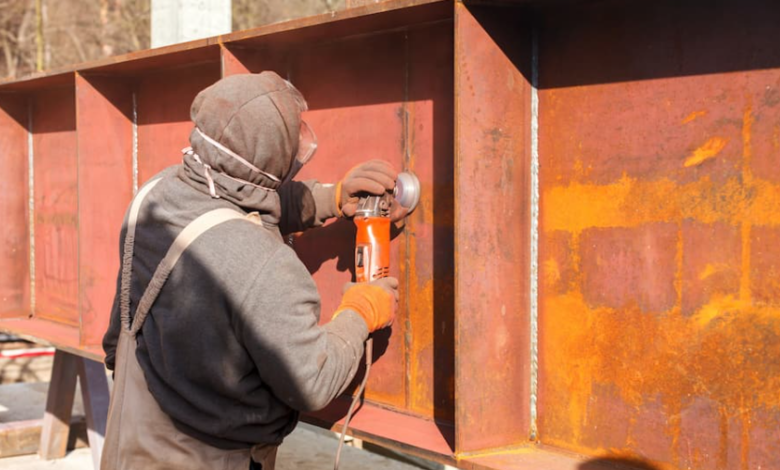From Raindrops to Rust: A New Way to Repel the Elements

Imagine wiping down your phone screen or fridge door, only to see fresh marks appear within minutes. Or think about stepping outside after a storm to find water stains creeping across your car’s paintwork. Surfaces are constantly under attack from the elements — fingerprints, smudges, moisture, dust, and corrosion. It’s no wonder that industries are turning to invisible solutions like anti-fingerprint coatings, which protect materials while keeping them looking and performing like new.
The Hidden Cost of Everyday Wear
Most of us don’t realise how much time we spend fighting against the little things that make surfaces look dull. Smudged appliances, scratched car interiors, water-stained windows, and tarnished metals all chip away at how “new” something feels. This isn’t just cosmetic. A worn look often makes us replace products earlier than necessary, even when they’re still functional.
Durability is about more than resisting a major dent or break — it’s also about withstanding the daily wear and tear we barely notice until it builds up. That’s where protective surface technologies step in.
Nature as a Blueprint
Interestingly, many modern coatings are inspired by nature. The lotus leaf, for example, is famous for its ability to repel water and dirt thanks to its micro-textured surface. Scientists have studied these structures to create hydrophobic (water-repelling) and oleophobic (oil-repelling) layers that can be applied to metals, glass, and plastics.
By mimicking these natural designs, engineers have found ways to help materials resist everything from fingerprints to rust, all without changing their appearance.
Where You’ll Find Invisible Protection
Although you might not notice them, protective coatings are already woven into everyday life:
- Smartphones and tablets – Smudge-resistant screens are treated with invisible layers.
- Kitchen appliances – “Fingerprint-proof” stainless steel stays cleaner longer.
- Automobiles – Car exteriors and interiors are designed to resist both water and oil-based marks.
- Eyewear and lenses – Glasses and camera lenses benefit from coatings that repel grease and dust.
- Building materials – Windows and façades are treated to reduce water stains and corrosion.
The beauty is that the protection works silently in the background — your phone looks sleek, your car’s dashboard stays polished, and your fridge door doesn’t turn into a smudge magnet.
The Science at Work
At the microscopic level, most surfaces aren’t as smooth as they look. Tiny pores and grooves trap oil, dirt, and water, making stains cling stubbornly. Coatings act like a sealant, smoothing out these imperfections.
- Hydrophobic coatings repel water droplets, causing them to bead and roll off.
- Oleophobic coatings resist oils from fingerprints and food.
- Anti-corrosive coatings protect metals from rust and tarnish.
By combining these properties, materials become far more resilient against the elements we deal with daily.
See also: Blockchain Beyond Cryptocurrency: Real-World Applications of Blockchain Technology
Practical Benefits That Add Up
For consumers, the payoff is simple but meaningful:
- Less cleaning – Surfaces stay cleaner with less effort.
- Time saved – No need to constantly wipe down screens or appliances.
- Longevity – Products look newer for longer, delaying replacement costs.
- Improved hygiene – Easier to sanitise in kitchens, bathrooms, and public spaces.
- Sustainability – Longer lifespans mean fewer items end up in landfills.
It’s a small layer with a surprisingly big impact.
Looking Ahead: Smarter Coatings
Today’s coatings are impressive, but research is pushing the boundaries even further. Future innovations may include:
- Self-healing films that repair minor scratches automatically.
- Antimicrobial properties that kill germs on high-touch surfaces like door handles.
- Adaptive layers that respond to environmental conditions, shifting between water and oil resistance.
- Eco-friendly solutions that reduce reliance on harsh cleaning chemicals.
These advances will likely spread across industries, from healthcare to home design, making everyday objects safer, cleaner, and more durable.
Why It Matters More Than You Think
On the surface, coatings might seem like a small detail. But think about the ripple effect: less cleaning, fewer chemicals, products that stay beautiful and functional longer, and fewer replacements piling up in landfills. All of this points to a future where durability isn’t just about toughness — it’s about efficiency, sustainability, and design integrity.
In the end, protection we can’t see may be what helps us preserve the things we value most. From raindrops that roll away to fingerprints that never appear, the future of durability lies in small, invisible details that make life a little easier.





